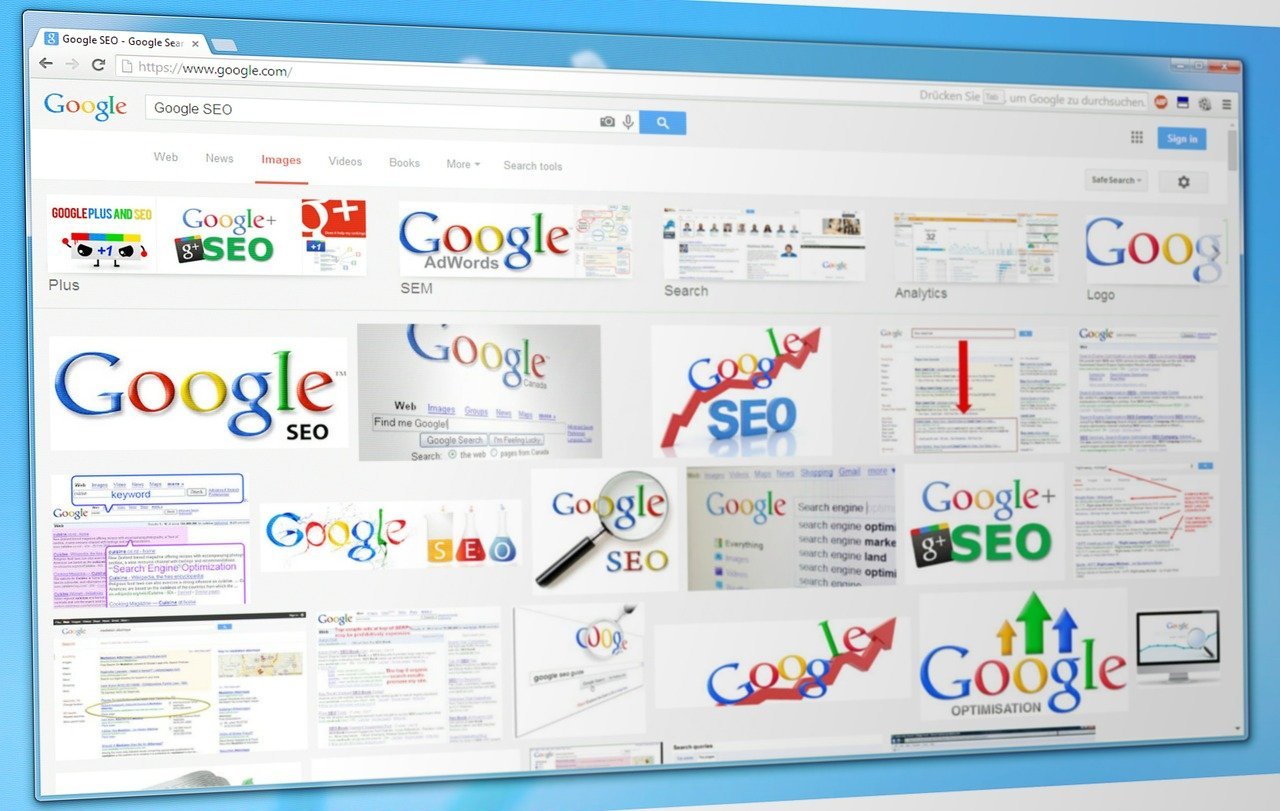
Understanding the Types of Google Ads and Their Benefits
Published: 2025-01-13 10:31:45
Google Ads is one of the most powerful advertising platforms available today, offering a variety of options to reach your target audience. Each type of campaign has unique features, benefits, and use cases that make it suitable for different marketing objectives. Understanding the various Types of Google Ads can help you choose the right strategy for your business.
Types of Google Ads and Their Benefits
Here, we explore the different types of Google Ads—Search Ads (capturing user intent through keywords), Display Ads (reaching users across websites visually), and Video Ads (building brand awareness on platforms like YouTube)—and how they can drive success for your campaigns.
1. Search Ads
Search ads are the most common and well-known Types of Google Ads. These ads appear at the top and bottom of Google search results pages when users search for specific keywords.
Key Features:
- Text-based ads.
- Targeted through keywords.
- High intent because they appear when users are actively searching for products or services.
Best For:
- Driving website traffic.
- Generating leads.
- Boosting sales for products or services.
Example Use Case:
A local plumber can use search ads to appear at the top of search results when someone types “plumbing services near me.”

2. Display Ads
Display ads are a visually engaging type of Google Ads that appear on websites within Google’s Display Network. This network includes millions of websites, apps, and YouTube.
Key Features:
- Image-based ads, with options for text overlays.
- Reach a wide audience.
- Cost-effective for brand awareness.
Best For:
- Building brand awareness.
- Retargeting past visitors.
- Supporting other ad campaigns.
Example Use Case:
An online clothing retailer can use display ads to showcase their new collection on fashion blogs and websites.
Know About : Shopify Application Development Cost : How Much Does It Cost To Build A Shopify App in 2025?
3. Shopping Ads
Shopping ads are ideal for e-commerce businesses, displaying product information directly within the ad. These ads appear in search results and the Google Shopping tab.
Key Features:
- Includes product image, price, and merchant name.
- Targeted based on product data (not keywords).
- High visibility for e-commerce products.
Best For:
- Driving online sales.
- Promoting specific products.
Example Use Case:
A shoe retailer can use shopping ads to display their latest sneakers with pricing and availability directly in search results.
4. Video Ads
Video ads are one of the most engaging Types of Google Ads, primarily shown on YouTube. They can appear before, during, or after YouTube videos or as standalone ads.
Key Features:
- Uses video content to capture attention.
- Various formats, including skippable and non-skippable ads.
- Great for storytelling and brand engagement.
Best For:
- Building brand awareness.
- Engaging users with compelling content.
- Promoting products or services visually.
Example Use Case:
A fitness brand can create a short, engaging video ad promoting their new workout program to run before YouTube fitness tutorials.
5. App Promotion Ads
App promotion ads are specifically designed to increase app downloads or engagement. These ads can appear across Google’s Search, Display, and YouTube networks.
Key Features:
- Optimized for app installs and in-app actions.
- Appears on multiple Google platforms.
- Encourages direct interaction with the app.
Best For:
- Driving app installs.
- Re-engaging app users.
- Promoting new app features.
Example Use Case:
A gaming app can use app promotion ads to target gamers and encourage downloads.
6. Smart Ads
Smart ads use Google’s machine learning to automate ad creation, targeting, and optimization. These are ideal for small businesses or advertisers with limited experience.
Key Features:
- Simplified campaign setup.
- Automatically optimized for performance.
- Combines elements of different ad types.
Best For:
- Small businesses.
- Time-saving campaigns.
- Beginners in digital advertising.
Example Use Case:
A local bakery can use smart ads to promote their products and services without having to manage campaigns manually.

7. Performance Max Ads
Performance Max is a newer addition to the Types of Google Ads, combining all Google networks in one campaign. These campaigns use automation to deliver ads across Search, Display, YouTube, Gmail, and more.
Key Features:
- Cross-channel advertising.
- Maximizes performance through automation.
- Data-driven audience targeting.
Best For:
- Businesses seeking full coverage across Google’s networks.
- Optimizing for conversions.
Example Use Case:
A travel agency can use Performance Max ads to target potential customers across various platforms with offers for vacation packages.
8. Local Ads
Local ads are designed to help businesses promote their locations. These ads appear on Google Maps, Search, and Display, encouraging users to visit physical locations.
Key Features:
- Focused on driving foot traffic.
- Includes location details and call-to-action.
- Appears on Google Maps and nearby searches.
Best For:
- Brick-and-mortar businesses.
- Increasing in-store visits.
Example Use Case:
A coffee shop can use local ads to attract customers searching for nearby cafes.
9. Discovery Ads
Discovery ads are visually rich and personalized, appearing across Google’s Discover feed, YouTube, and Gmail.
Key Features:
- Highly visual and engaging.
- Uses machine learning to target users.
- Appears in user-friendly formats.
Best For:
- Driving brand discovery.
- Engaging users with visually appealing content.
Example Use Case:
A skincare brand can use discovery ads to showcase new product lines to users exploring beauty content on Google Discover.
Read Also: Android App Development Cost Guide 2025
Benefits of Using Multiple Types of Google Ads
Using multiple types of Google Ads can help maximize your reach and improve the performance of your digital advertising strategy. Here are the key benefits:
1. Wider Reach and Audience Segmentation
- Search Ads target users actively looking for specific products or services, while Display Ads can capture the attention of potential customers browsing websites across the web.
- Video Ads on YouTube can help you engage with audiences in a more interactive and visual way.
- Combining these different types allows you to reach various audience segments, increasing visibility across multiple channels.
2. Better Ad Placement Flexibility
- Different types of Google Ads allow you to choose where your ads appear, whether on Google Search, YouTube, Google Display Network, or apps. This flexibility helps you target your audience based on their browsing habits and interests.
3. Enhanced Ad Targeting
- Remarketing campaigns using Display or Video Ads help you reconnect with users who have already interacted with your brand.
- Dynamic Search Ads can help automate and expand targeting, ensuring that your ads appear for relevant searches without manual keyword input.
- You can layer targeting across multiple ad types to narrow down who sees your ads, ensuring you're reaching the most relevant audience.
4. Increased Ad Engagement
- Different ad formats (text, video, or display) allow you to communicate your message in various ways, increasing the chance of engagement.
- For example, Video Ads can create more emotional connections with customers, while Responsive Search Ads allow for more personalized messaging.
5. Optimization and Performance Insights
- Multiple ad types provide more data for performance tracking and optimization. By analyzing metrics from Search, Display, and Video Ads, you can refine your strategies to allocate budget effectively, adjust bids, and tweak creative content.
6. Cost-Effectiveness
- Different ad types have different costs, and when used together strategically, they can reduce your overall cost-per-acquisition (CPA).
- For instance, Display Ads can be cheaper compared to Search Ads but still bring in valuable leads or impressions.
7. Increased Brand Awareness and Conversions
- Using multiple ad formats can work in tandem to boost both brand awareness and conversions. For example, Display Ads help raise awareness, and Search Ads convert users who are already interested.
- YouTube Video Ads can also drive brand recognition and generate a buzz before users take action on a search ad.
8. Diversification of Ad Strategies
- By combining different types of Google Ads, you can diversify your strategy and avoid over-relying on one channel. This can be particularly useful if one channel’s performance drops or experiences budget limitations.
9. Better Retargeting Opportunities
- With Display and Video Ads, you can re-engage past visitors who didn’t convert initially, reminding them of your products or services through customized messaging. This increases the chances of conversion.
By using a mix of Google Ads types, you create a comprehensive, multi-faceted strategy that addresses different stages of the customer journey, from awareness to conversion.

Choosing the Right Types of Google Ads for Your Business
Selecting the right Types of Google Ads depends on your business goals, target audience, and budget. Here are some tips to guide your decision:
- Define Your Objectives: Understand whether your goal is to drive sales, increase traffic, or build brand awareness.
- Consider Your Audience: Identify where your target audience spends time online.
- Evaluate Your Budget: Allocate your budget wisely across different ad types.
- Test and Analyze: Experiment with various Types of Google Ads and measure their performance to optimize your campaigns.
Summary
Understanding the Types of Google Ads is crucial for creating effective advertising campaigns. Each type offers unique features and benefits, catering to various business needs and goals. By leveraging the right mix of ad types, you can maximize your reach, engage your audience, and achieve your marketing objectives.
Start exploring these Types of Google Ads today to elevate your advertising strategy and drive success for your business.
FAQs
1. What are Google Ads?
Google Ads is an online advertising platform that allows businesses to display ads across Google's network, including search results, websites, YouTube, and mobile apps, to target potential customers.
2. What types of Google Ads are available?
Google Ads offers various ad types, including Search Ads (text ads appearing on Google Search), Display Ads (visual ads on websites), Video Ads (ads on YouTube), Shopping Ads (product-based ads), and App Ads (ads promoting mobile apps).
3. How do I set up a Google Ads campaign?
To set up a campaign, create a Google Ads account, choose your campaign goal, select the ad type, define your target audience, set your budget, and create your ad content. Google Ads will guide you through the process.
4. How does Google Ads charge for ads?
Google Ads primarily uses a pay-per-click (PPC) model, where advertisers pay when users click on their ads. Some campaigns may use cost-per-impression (CPM) or cost-per-acquisition (CPA) pricing models.
5. How can I track the performance of my Google Ads campaign?
Google Ads provides comprehensive analytics and reporting tools to track metrics like impressions, clicks, conversions, and return on investment (ROI). You can use tools like Google Analytics to gain deeper insights into campaign performance.
Also Read : How to Optimize Your Google Ads Account



